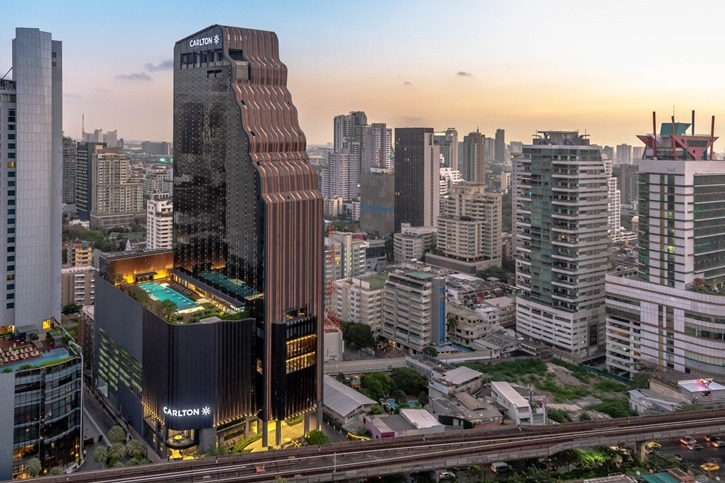Is There Uber in Thailand? A Comprehensive Guide
Thailand, a top destination for its vibrant culture, scenic beauty, and mouth-watering cuisine, also poses questions for travelers regarding its transportation system. One of the most frequently asked questions is about the presence of Uber in Thailand. Here’s what you need to know:

Uber’s Status in Thailand
As of the latest update, Uber is not operational in Thailand. In fact, Uber hasn’t been present in Thailand since it was taken over by Grab, its Southeast Asian counterpart. This means that if you’re familiar with using Uber in other countries, you won’t find the app functional in Thailand.
Uber’s journey in Thailand was marked by both rapid growth and challenges. Here’s a deeper dive into the status and history of Uber in the Land of Smiles:
-
Initial Entry and Growth: When Uber first entered the Thai market, it was met with enthusiasm, especially among urban dwellers and tourists. The convenience of app-based transportation was a novelty, and many appreciated the standardized fares and the ability to track rides in real-time.
-
Regulatory Hurdles: However, Uber’s operations in Thailand weren’t without controversy. The company faced regulatory challenges from the Thai government, which raised concerns about the legality of the service, especially in relation to existing taxi services. There were instances of clashes between traditional taxi drivers and Uber drivers, stemming from the competition and perceived threat to livelihoods.
-
The Rise of Grab: Grab, a homegrown Southeast Asian ride-hailing giant, was Uber’s main competitor in the region. With a deeper understanding of local nuances and a broader range of services, including food delivery and payment solutions, Grab quickly gained traction in Thailand.
-
The Merger: In a significant turn of events, Uber and Grab announced a deal in 2018 where Uber would exit Southeast Asia, including Thailand, in exchange for a stake in Grab. This meant that Uber’s services, including its ride-hailing platform, would be integrated into Grab’s platform.
-
Implications for Travelers and Locals: With Uber’s exit, travelers and locals had to adapt to the change. While many seamlessly transitioned to using Grab, others explored alternative transportation options, such as traditional taxis, tuk-tuks, and motorcycle taxis. The good news is that Thailand offers a plethora of transportation choices, ensuring that mobility remains accessible and diverse.
-
Future Prospects: While Uber’s brand is no longer visible on Thai streets, its legacy as a pioneer of app-based transportation in the country is undeniable. The transportation landscape in Thailand continues to evolve, with new players and technologies emerging, all aiming to cater to the dynamic needs of its residents and visitors.
Enter Grab: The Uber Alternative
While Uber may not be available, travelers and locals alike have embraced Grab as the go-to ridesharing app. Just like Uber, with Grab, you simply download the app, enter your destination, and wait for your ride. While Grab might be slightly more expensive than traditional taxis or tuk-tuks, it offers the convenience of app-based booking, a clear pricing structure, and often air-conditioned vehicles.
As the digital wave swept across Southeast Asia, Grab emerged as a formidable force, reshaping the transportation dynamics in countries like Thailand. Here’s a closer look at Grab’s influence and offerings:
-
Localized Approach: One of the reasons for Grab’s success in Thailand is its understanding of local needs and preferences. The app is available in both English and Thai, catering to a wide audience. Moreover, Grab has localized promotions and partnerships, making it more appealing to the Thai populace.
-
Diverse Fleet: Unlike Uber, which primarily focused on cars, Grab offers a diverse range of transportation options in Thailand. From GrabCar and GrabBike for quick solo trips to GrabTaxi for those who prefer traditional taxis, there’s an option for every need.
-
Safety Features: Grab places a strong emphasis on safety. The app has features like “Share My Ride,” allowing users to share their trip details with loved ones. Additionally, drivers undergo background checks, and the app regularly prompts users for feedback to ensure service quality.
-
Integrated Services: Beyond just transportation, Grab has expanded its services in Thailand. GrabFood, for instance, is a popular food delivery service, while GrabPay offers a cashless payment solution, making transactions smoother for both drivers and passengers.
-
Tourist-Friendly: For tourists, Grab is a boon. The hassle of negotiating fares or navigating language barriers is significantly reduced. Plus, the app provides an estimated fare before booking, ensuring transparency and preventing overcharging.
-
Economic Impact: Grab has also contributed to the Thai economy by providing employment opportunities. Many locals have taken up driving for Grab as a full-time job or a side hustle, benefiting from the platform’s flexibility.
-
Sustainability Initiatives: Recognizing the environmental impact of ridesharing, Grab has initiated green campaigns in Thailand. They’ve introduced measures to offset carbon emissions and have also explored electric and hybrid vehicle options for their fleet.
-
Cultural Integration: Grab isn’t just a transportation app in Thailand; it’s integrated into the daily life of many Thais. Whether it’s a quick ride to the mall, a food delivery after a long day, or a cashless payment at a local store, Grab’s presence is palpable.
In essence, while Uber’s exit left a void in Thailand’s ridesharing scene, Grab seamlessly filled it, offering not just a service but a comprehensive lifestyle solution. Its adaptability, understanding of local nuances, and commitment to service excellence have solidified its position as Thailand’s premier ridesharing platform.
Other Transportation Options in Thailand
- Taxis: One of the most convenient ways to get around, taxis are plentiful in Thailand, particularly in bustling cities like Bangkok. They offer an affordable means of transportation, with most short journeys costing less than $5. When hailing a taxi, it’s crucial to ensure that the driver activates the meter. This ensures a fair rate and prevents potential disputes over fares. To know everything about taxis in Thailand, check our our comprehensive Thailand taxis guides here.
- Tuk-tuks: A quintessential Thai experience, tuk-tuks are motorized rickshaws that have become an iconic symbol of Thai streets. While they are a fun and novel way to travel short distances, they can be a bit more hazardous than traditional taxis. Before hopping into a tuk-tuk, it’s wise to negotiate and settle on a fare to avoid any misunderstandings later.
- Buses: Serving as the backbone of public transportation in many Thai cities, buses are efficient and economical. They come in various colors, each indicating a specific route or service level. For instance, yellow and orange buses are often air-conditioned, providing a respite from the tropical heat. They connect various parts of the city and even offer long-distance routes to other provinces.
- Motorcycle taxis: For those looking to weave through traffic and reach their destination swiftly, motorcycle taxis are the way to go. Donned in colorful vests, these drivers are skilled at navigating the congested streets. However, it’s essential to be aware of the inherent risks, especially during peak traffic hours. Always wear the provided helmet for safety.
- Boats and Ferries: Thailand, with its vast network of rivers and islands, offers numerous opportunities for water-based transportation. In cities like Bangkok, boats ply the Chao Phraya River, providing a scenic and efficient way to travel. For those venturing to the idyllic islands of Phuket, Koh Samui, or Koh Phi Phi, ferries are the primary mode of transport. Not only are they cost-effective, but they also offer travelers a chance to soak in the breathtaking coastal views of Thailand.
- Songthaews: Often referred to as “red trucks” in cities like Chiang Mai, songthaews are a unique and popular mode of transportation in Thailand. They are essentially converted pickup trucks with two rows of seats in the covered back, and their name literally translates to “two rows” in Thai. Songthaews operate both as shared taxis and local buses, picking up multiple passengers headed in the same general direction. Fares are typically very affordable, and while there are designated stops, you can often hail a songthaew from the side of the road. It’s common practice to negotiate the fare with the driver before boarding, especially if you’re traveling to a specific destination. They are a great way to experience local life, as they are frequently used by locals for their daily commutes.
Traffic in Thailand
Thailand’s bustling streets, particularly in its capital city of Bangkok, are a testament to its vibrant urban life. However, this vibrancy often translates to chaotic traffic conditions. In 2022, Thailand earned the dubious distinction of being ranked as the world’s most congested country for traffic. The intricate web of roads in Bangkok, combined with a high volume of vehicles, can lead to gridlocks that last for hours.
The elevated BTS Skytrain in Bangkok offers a respite from this congestion. Running on two main lines, the Silom and Sukhumvit, the Skytrain whisks passengers above the city streets, providing not only a faster mode of transport but also a panoramic view of the city’s skyline. It’s a favorite among both locals and tourists for its efficiency and air-conditioned comfort.
For those who prefer to stay on the ground, it’s crucial to be strategic. Avoiding peak traffic hours, which typically run from 7:00 AM to 9:00 AM and 5:00 PM to 7:00 PM, can make a significant difference in travel time. Additionally, many locals and savvy travelers make use of navigation apps that provide real-time traffic updates, helping them choose less congested routes.
Motorcycle taxis are another popular choice for navigating through tight traffic. These nimble vehicles can weave through cars, cutting down travel time significantly. However, they come with their own set of risks, so it’s essential to ensure safety by wearing helmets and choosing experienced drivers.
Lastly, a bit of patience goes a long way. Embracing the local pace and using the time spent in traffic to observe the daily life unfolding around can turn a potentially frustrating experience into an enriching one. After all, navigating the ebb and flow of Thailand’s traffic is all part of the adventure.
Conclusion
While Uber might not be present in Thailand, there are numerous transportation options available for travelers. Whether you opt for the modern convenience of Grab, the traditional charm of a tuk-tuk, or the efficiency of the skytrain, getting around in Thailand is an experience in itself. If you would like to know more about Thailand transportation system, check out our comprehensive guide here.









